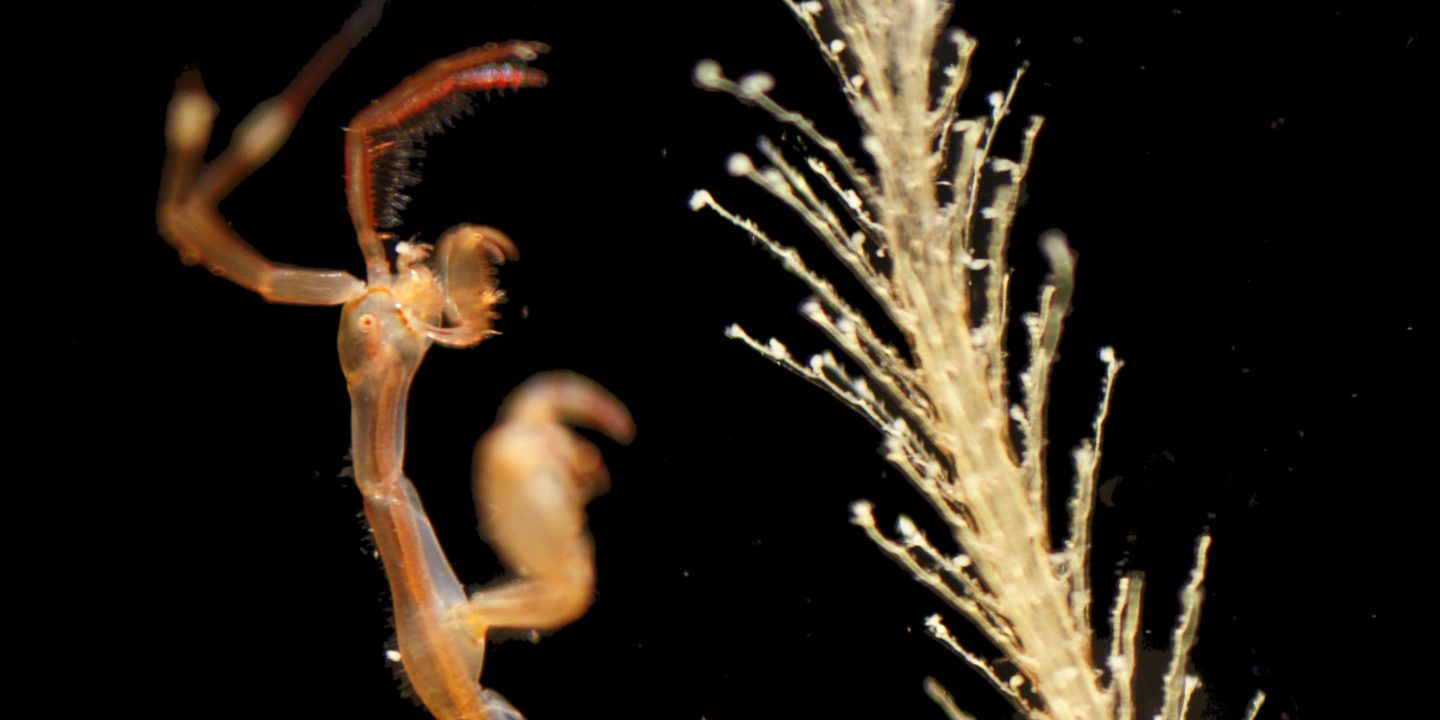Last week Line Willersrud, a Master student in our group, successfully defended her Master thesis “Assessing genetic biodiversity in Caprellidae”. She worked very hard for her thesis by collecting caprellid species along the Norwegian coast as part of the Artsdatabanken project “Assessing biodiversity in the marine algae belt“, identifying and sequencing them and interpreting all the results she got including tracing down all these old taxonomic literature. We are really impressed by the work you did. The amphipod family Caprellidae, also called skeleton shrimps, comprises exclusively marine species inhabiting algae, sea grasses, sponges, hydroids, bryozoans, ascidians, anthozoans, echinoderms as well as man-made structures such as ropes, fish cages, netting, buoys, pontoons and oil platforms. They live and walk their entire live on these substrates as they are poor swimmers and avoid being drifted off into the open water. They also really do not look a typical crustacean, you might know from your last dinner. Their body is slender and cylindrical with specialized appendages, which are usually very thin.
Table showing the match and mismatch between morphological and molecular identifications.
The major outcome of your thesis was clearly that you showed how difficult it is to determine caprellid species solely on morphological data even when it is done by taxonomic experts on the groups. Juveniles and females often just lack the male characters relevant for a species identification and might also express more variability in the characters easily leading to mis-identifications. Of the morphological identifications, 45% of the species turned out to be a different species using molecular data. While Caprella acanthifera, C. mutica and Phtisica marina were always or usually identified correctly, C. septentrionalis, C. equilibra, C. linearis and Aeginina longicornis was always misidentified and were a different species. The actual species was in most cases C. mutica.

Caprella mutica is an invasive species spreading from its native range along the Japanese coast all around the world and outcompetes native caprellid species. So far, it was known in Norway only to occur in man-made structures such as harbors, but not in natural habitats. Line’s work showed that this is not the case and that C. mutica occurs in natural habitats along the Norwegian coastline. Moreover, caprellids species, which should occurred there, could not be found and the morphological identifications turned out to be C. mutica instead. This points to the very possibility that the invasion by C. mutica in Norway is much further progressed than assumed so far and that it has progressed unnoticed and hidden because it might have been misidentified as different native species.
![]()

1 Comment on “The hidden invasion along the Norwegian coast”